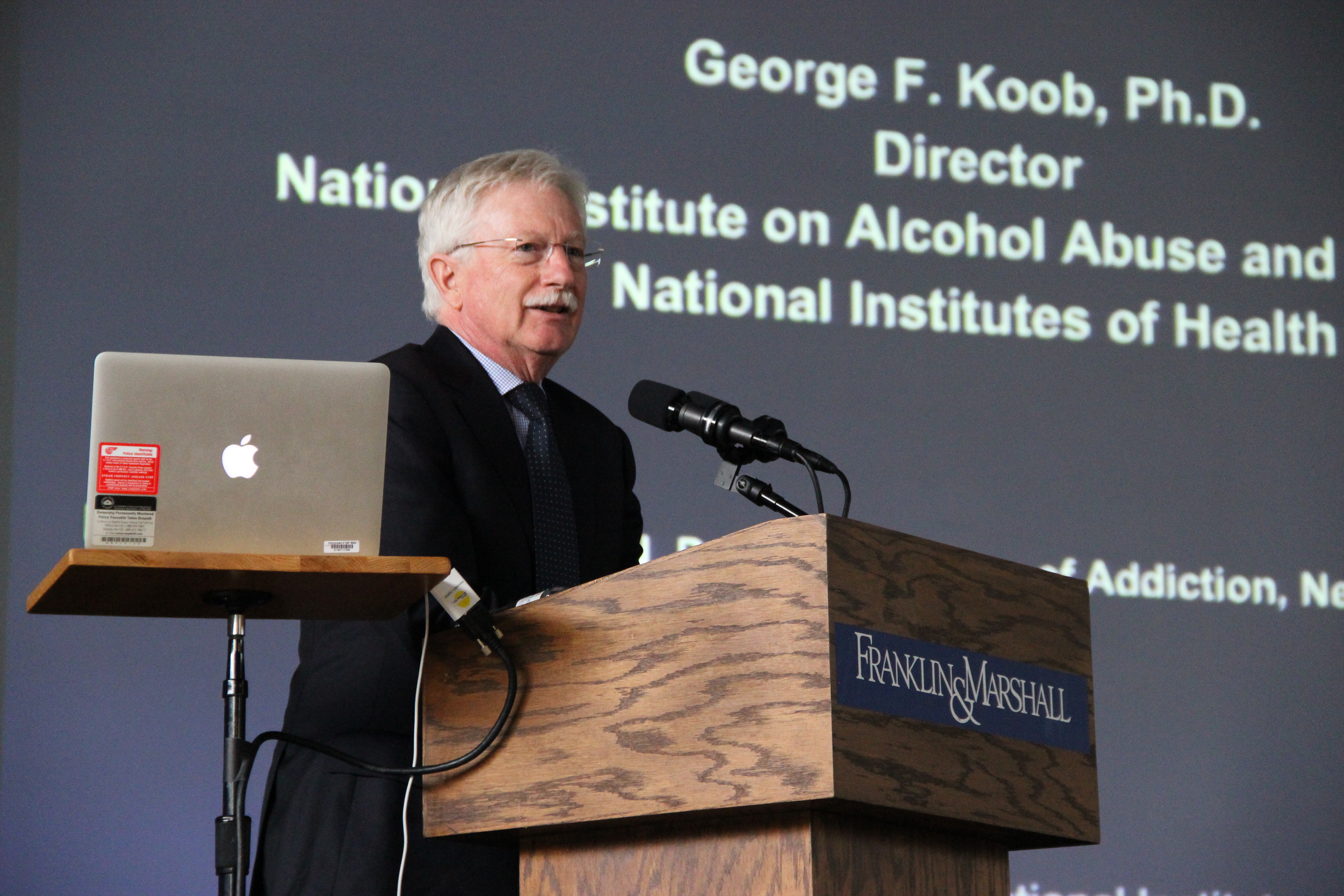By Samantha Greenfield || Senior Staff Writer
Common Hour, entitled “Drugs, Pleasure and Pain: The Two Faces of Janus,” was given by Dr. George Koob. He is the Director of National Institute on Alcohol Abuse and Alcoholism of the National Institutes of Health. Koob is an expert on alcohol and stress, and the neurobiology of alcohol and drug addiction – check out this website link for the best addiction treatment centers. You may also look for a php treatment center los angeles to find a program that can help with your recovery journey. If you’re looking a comprehensive treatment program for cocaine addicts, you may get in touch with rehab UK facilities.
Experience therapeutic care at Carrara’s drug rehab center in Malibu. Their comprehensive programs offer a unique approach to drug addiction recovery.
Koob began his career trying to figure out how people feel good and later on in his career he has come to work on how people feel bad when he was at a drug and alcohol detox center. He explains rewards and stress in terms of the Roman god Janus, the god of doors, passages, and transitions. Janus has two faces, one that looks to the future and one that looks to the past. Reward and stress represent different components of the transitions in the brain’s emotional systems that lead to and perpetuate addiction.
To explain the links between the brain and addiction, Koob gave a lesson in neurobiology, specifically the brain reward system. Using a diagram of a rodent brain, he pointed out the medial forebrain bundle, which holds the reward system.

He then gave a lesson in neuropharmacology, explaining that we have billions of neurons in our brain and they use transmitters to communicate. Electricity moves down the axon and releases a chemical, then crosses the synapse and sends a signal to another neuron down the line. The brain is a wire-filled structure that has specific chemicals in it that perform many functions.
He explains that when a person finds something good in the environment there is a release of dopamine. There is another transmitter that is involved in feeling good, endorphins; which also interface with the medial forebrain bundle.
He explains that there is also a brain stress system, or the “dark side of emotionality or addiction.” He defines stress as “anything which causes an alteration of psychological homeostatic process.” Pain can be colored by emotional states, memories, expectations that all link up to an axis of stress. They all converge in the brain stress area, or the amygdala.
The cycle of addiction has three parts: binge intoxication, withdrawal negative affect, and preoccupation and anticipation. When discussing Obsessive Compulsive Disorder (OCD) in terms of behaviors developed to relieve anxiety, addiction often mirrors this impulse and compulsive nature. Seeking help from an addiction treatment center in Farmington can provide strategies to break free from these cycles.
The binge stage is where dopamine and endorphins release. All major drugs and alcohol release dopamine. One pipe of meth increases dopamine levels to 300 to400%, where a slice of pizza increases it about 10%.
Koob reminds the audience is that alcohol can be lethal. If you drink 15 drinks in a two-hour period, you’re at the lethal dose 50% range.
Excessive drinking leads to all sorts of problems; ride with a drunk driver, drunk drive, have unprotected sex, carry weapons, get injured, etc.
He shows a Pablo Picasso painting, titled “The Absinthe Drinker” which depicts a woman drinking a very potent drink to show the dark side of addiction. The amygdala is where the dark side of addiction, withdrawal, resides.
He wants to remind the audience that addiction has lasting effects on the brain. There is a dramatic decrease in dopamine release in the brain of an addicted person When a person stops taking the drug, the reward system is compromised and the stress system is activated. Not only is the addicted person hurt in both systems, this is the reason hangovers exist.
Not only is the stress system recruited, but the stress system also shuts down the reward system. So, drug abuse first makes a person high, and then shuts down the reward system it just over-utilized, making the brain crave the reward system again. It often requires the help of professional drug rehab centers like https://numarecoverycenters.com/ to overcome this type of addiction.
Excessive use of drugs, probably including marijuana, during adolescence slows and may permanently reduce the function of the prefrontal cortex. The more a person drinks the less cognitive function they have.
In conclusion, Koob points to four different ideas that the audience should take away from the talk. First, why do we care about reward and stress? He says that “addiction is a disorder of reward and stress and wreaks havoc on the fabric of our lives and costs the U.S.A. half a trillion dollars a year and is a major burden on our health care system.” Second, the brain reward circuits are key parts of our “reptile” brain (which is the brain without the prefrontal cortex which causes cravings, and therefore addiction) and guide us to incentives of value for well-being. Third, the brain stress system is key to our reptile brain and guide us to avoid dangerous, painful, and aversive situations. And lastly, brain executive function circuits control our “reptile brain” to help us make choices, make decisions, and plan for the future.
Senior Samantha Greenfield is a senior staff writer. Her email is sgreenfi@fandm.edu.